Forms are one of the most important parts of your WordPress website. Whether you’re collecting leads or processing orders, they play a key role in growing your business.
But how do you know if your forms are actually working?
Without tracking, you might be missing out on valuable insights – like where your leads come from or which forms are converting best.
By monitoring form submissions, you can see which forms perform well, identify drop-off points, and optimize them for better conversions.
In our experience, optimizing forms is much easier when you have the right data. And better forms mean better results for your website. 📈
In this guide, we’ll show you step-by-step how to set up WordPress form tracking in Google Analytics.
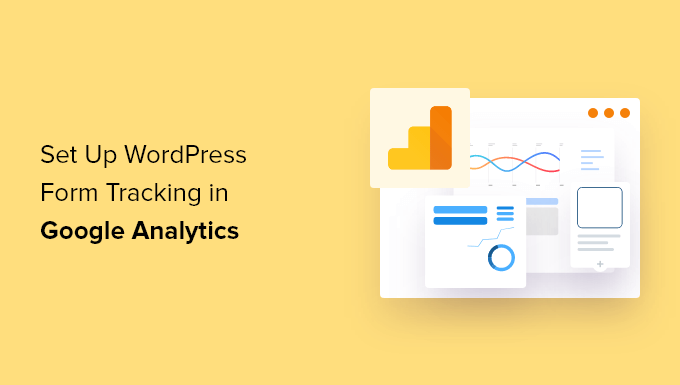
Why Track WordPress Forms in Google Analytics?
Forms are an essential part of a WordPress website. They help you stay connected with your audience, build an email list, boost eCommerce conversions, and grow your business.
By setting up form tracking in Google Analytics, you get to see how different forms are performing on your website. This way, you can promote high-converting forms on your most important page while optimizing low-converting forms. You can even see which pages visitors landed on before submitting a form.
Another benefit of form tracking is that it helps you better understand your audience. You can find out which channel they’re using to find your website and submit a form. Plus, you can also track and reduce form abandonment by tracking them in Google Analytics.
Similarly, it also helps identify how your lead generation campaigns are performing or which referral website is driving the most leads on your site.
Armed with data from your WordPress forms, Google Analytics allows you to segment the form submission data based on various criteria, such as traffic source, demographics, and device types.
As a result, you can tailor your content and marketing efforts to fit your specific audience needs.
With that in mind, we’ll show you how to track WordPress forms in Google Analytics. Here’s a quick overview of all the topics we’ll share in this article:
Ready? Let’s get started.
Step 1. Setting Up WordPress Form Tracking in Google Analytics
The best way to set up WordPress form tracking in Google Analytics is with MonsterInsights. It’s a top Google Analytics plugin for WordPress, and over 3 million professionals use it to uncover insights and use data to grow their businesses, including our site.
ℹ️ At WPBeginner, we use MonsterInsights for plenty of tracking tasks, including for our form conversion rates. Check out our detailed MonsterInsights review to see what more it can do!
Before we start, do note that Google Analytics doesn’t track WordPress forms by default. You would have to edit the code to track your forms. This can be tricky for beginners, as the slightest mistake can mess up your tracking and break your website.
MonsterInsights removes the need to write code or hire a developer. It allows you to set up Google Analytics and track WordPress forms without editing code.
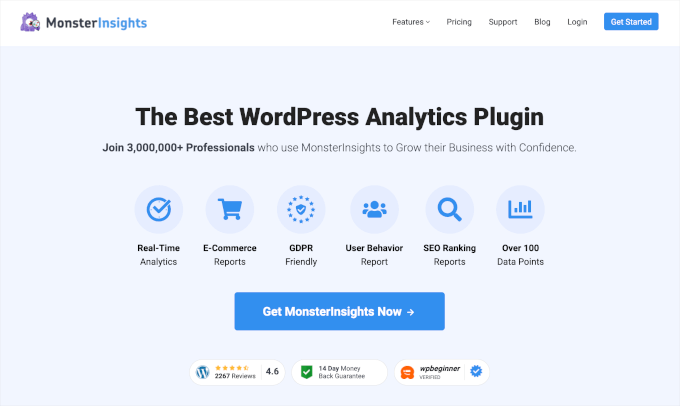
You can also track website traffic, uncover top referral traffic sources, find out your top-performing posts and pages, and more.
The plugin easily integrates with all of the most popular WordPress form plugins, like WPForms, Formidable Forms, Contact Form 7, and more.
For this tutorial, we’ll be using the MonsterInsights Pro plan because it includes the Forms addon, dashboard reports, and other advanced tracking features. There is also a MonsterInsights Lite version that you can use to get started.
First, you’ll need to install and activate the MonsterInsights plugin. Please see our guide on how to install a WordPress plugin for more details.
Upon activation, you’ll be taken to Insights in your WordPress dashboard and see the MonsterInsights welcome screen. Go ahead and click the ‘Launch the Wizard’ button to configure the plugin and connect it with Google Analytics.

If you need help, then please follow our guide on how to install Google Analytics in WordPress.
After that, you can head over to the Insights » Addons page from your WordPress admin panel. Next, scroll down to the ‘Forms’ addon and click the ‘Install’ button.
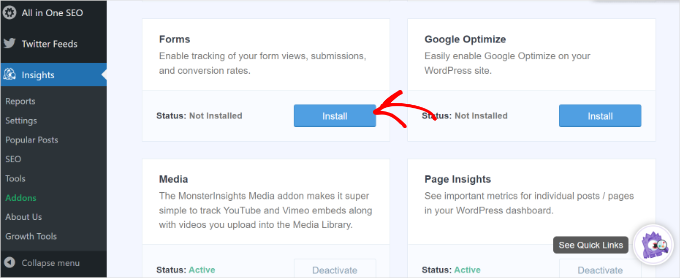
Once the plugin is installed, you should see the ‘Status’ change from ‘Not Installed’ to ‘Active.’
MonsterInsights will now automatically detect your WordPress form plugin and track your forms in Google Analytics.
To check the settings, you can head over to Insights » Settings from your WordPress dashboard and go to the ‘Conversions’ tab.
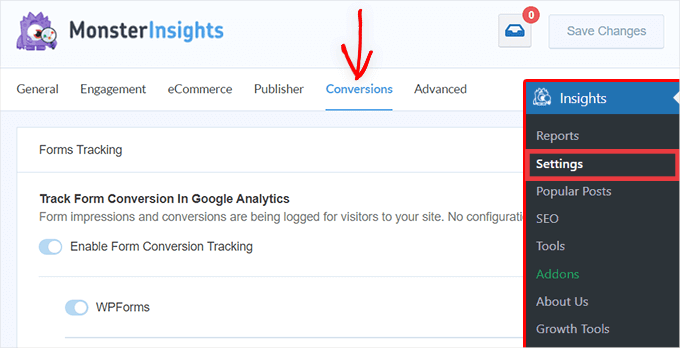
You’ll see that the toggle for the ‘Form Conversion Tracking’ option is already enabled.
Now, are you ready to see how your forms are performing?
Step 2: See How Your WordPress Forms Are Performing
MonsterInsights makes it super simple to see the data by showing stats inside your WordPress dashboard. This helps save time, as you can quickly find the data you need to make decisions.
To view the report, head over to Insights » Reports from the WordPress dashboard and then click the ‘Forms’ tab.
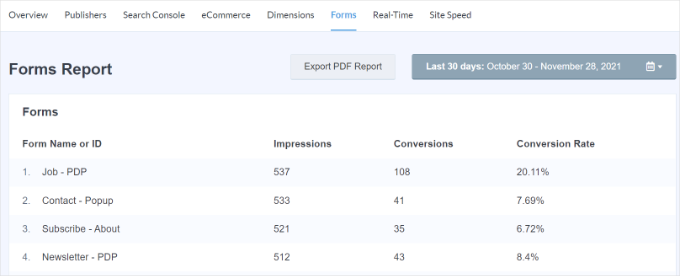
In the report, you’ll see impressions, which is the number of people who have viewed your form. You can also see the conversions, which are the number of people who completed the form, and conversion rates for each form on your website.
Now, you can also see WordPress form tracking data in Google Analytics.
First, you’ll need to log in to your Google Analytics account and select your website property from the menu at the top.
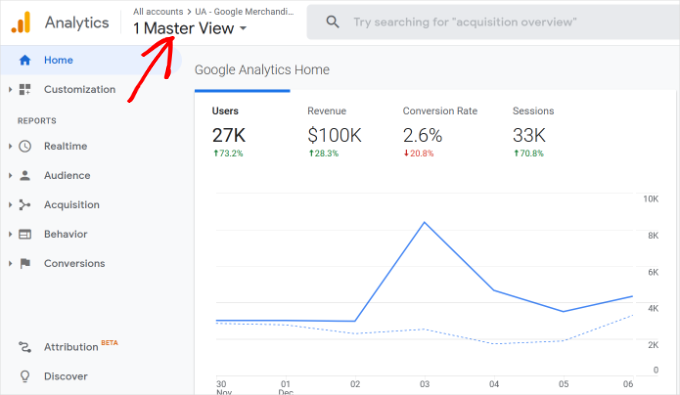
After that, you’ll need to go to Behavior » Events » Top Events from the menu on your left.
You can see different event categories in this section. Go ahead and click on the ‘form’ event category.
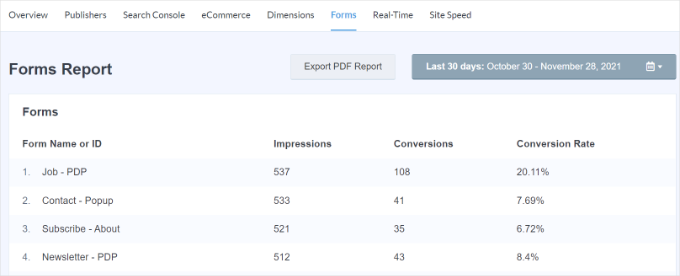
On the next screen, you’ll see the total impressions and conversions for your WordPress form.
You can select the ‘impression’ event action if you’d like to see the number of people who viewed your form or select ‘conversion’ if you want to see how many visitors submitted your forms.
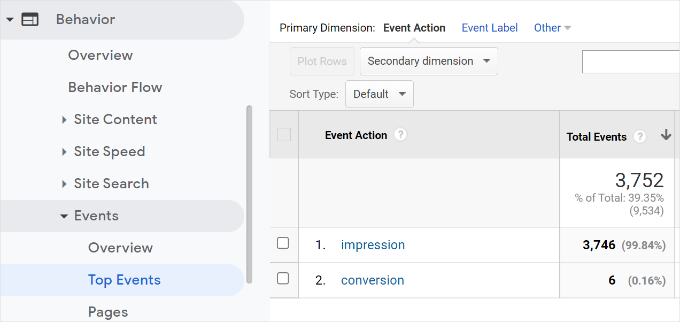
For example, let’s select the ‘impression’ event action.
Next, you’ll see which WordPress forms get the most views on your website.
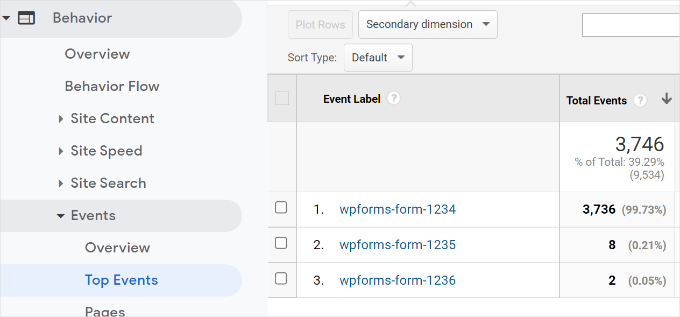
Besides Google Analytics, there’s another way to see how people interact with your forms. Let’s take a look.
Bonus Tip: Track User Journey in WPForms
If you’re using the WPForms plugin to add a contact form or any other type of form, then you can see what each user did on your site before submitting a form.
WPForms is the best contact form plugin for WordPress. It offers a User Journey addon that shows the steps your visitors took before submitting a form, such as the pages they viewed or opt-in campaigns they clicked.
ℹ️ WPForms has been our go-to tool for creating forms, these include our contact form and annual user surveys. For a deeper look into all its features, see our extensive WPForms review!
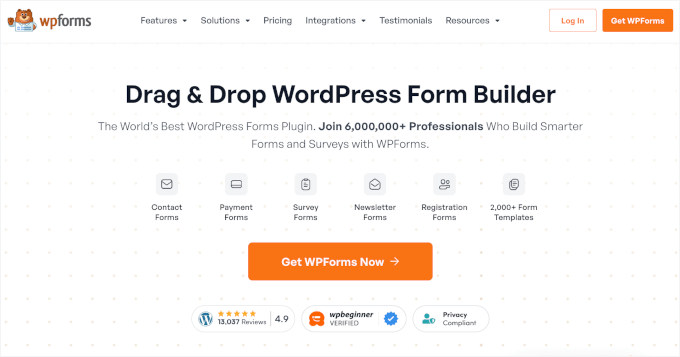
First, you’ll have to install and activate the WPForms plugin. For more details, please see our tutorial on how to install a WordPress plugin.
Do note that you’ll need the WPForms Pro version to use the User Journey addon.
Next, you can head over to WPForms » Addons from your WordPress dashboard. Then, navigate to the User Journey Addon and click the ‘Install Addon’ button.
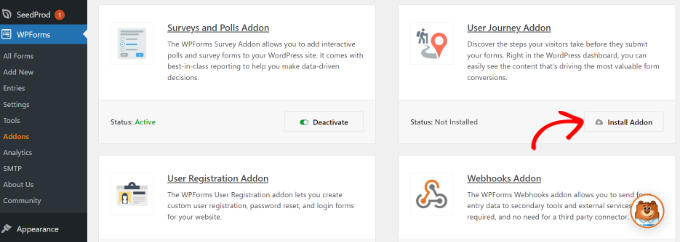
Once the addon is installed, you’ll need to go to WPForms » Entries from your WordPress dashboard.
After that, you can select a WordPress form to see the user journey.
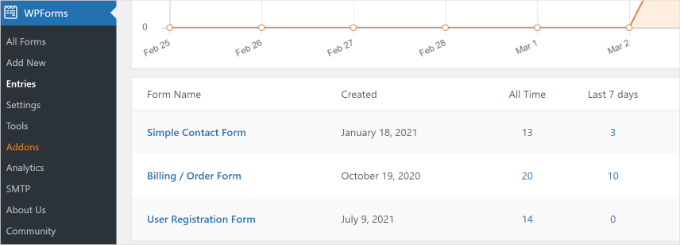
For this tutorial, we’ll view the Simple Contact Form entries.
Next, you can click the ‘View’ button under ‘Actions’ for any entry and see the user’s steps before submitting the form.
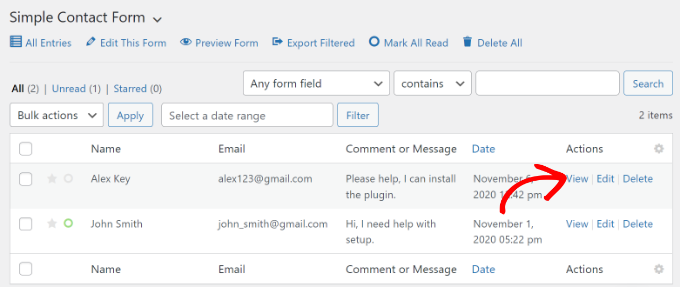
On the next screen, you’ll see details of your user.
Simply scroll down to the ‘User Journey’ section to see their path before completing the contact form and submitting it.
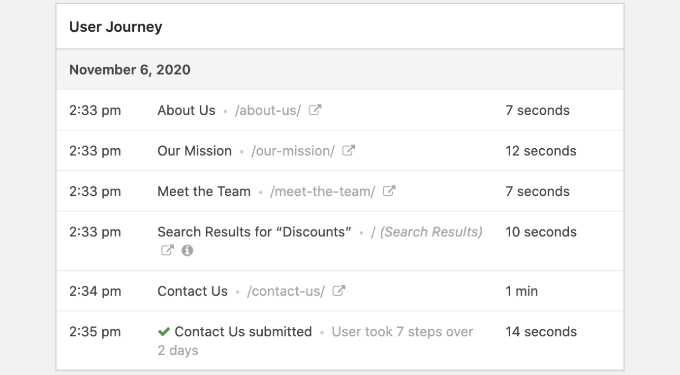
Using the data, you can better understand your users and see which pages or campaigns they visit before converting them into leads.
This way, you can promote your forms on pages that people view the most and increase your marketing campaigns’ visibility to get more leads.
For more details, please see our tutorial on how to track user journeys on WordPress lead forms.
We hope our article helped you learn how to set up WordPress form tracking in Google Analytics. You can also see our guide on how to do a/b split testing in WordPress or our list of the best data visualization plugins for WordPress.
If you liked this article, then please subscribe to our YouTube Channel for WordPress video tutorials. You can also find us on Twitter and Facebook.





Moinuddin Waheed
This is one of the best aspect of monster insights that it helps us track the website in its entirety.
i used to think that forms as such can’t be tracked this way but having a tracking mechanism for forms data and having right insights will help improve in forms conversion.
This guide is very helpful for employing forms tracking in our website.